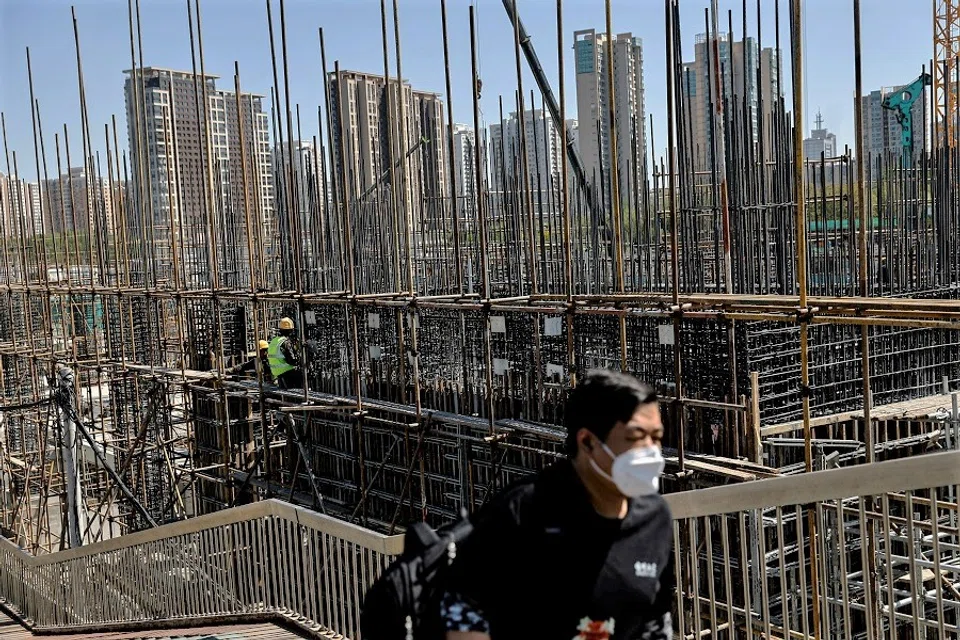China's overseas lending needs a full-fledged debt restructuring

The rapid growth of the Chinese economy during the last few decades has not been associated with China's external borrowing, as has been the case of many other rapidly developing economies. China's case is the opposite as the country has embarked on very rapid and massive overseas lending, especially since 2014.
The main reason why China, still an emerging economy, has become such a huge international lender, is that the country, despite a very high investment rate, has massive domestic savings which it cannot fully deploy domestically. It is indeed the large savings from Chinese households which have been splashed overseas, and especially in the emerging world.
China today finds itself in a similar situation to Japan but in a much larger scale of lending as far as emerging and frontier markets are concerned.
Japan and the Latin American debt crisis
Only a few economies have found themselves in a similar situation to that of China in the past. Japan and Taiwan, both with a large position as external creditors, have been investing overseas but Japan's case is much more similar to mainland China, as bank loans have been the main investment instrument both for China and Japan. Taiwan, instead, has channelled its excess savings in the form of portfolio flows, especially buying US credit but not through its banks lending directly.
Japanese banks, instead, became very large lenders in Latin America in the 1970s, as a way to recycle the country's massive trade surpluses. By the time the Latin American sovereign crisis hit, after the first oil crisis in 1979, Japanese banks reluctantly started to roll over loans. Attempts to limit their losses were futile since a massive restructuring eventually took place more than a decade later through the Brady Plan.
The reality is that the Latin American crisis turned out to be more costly than needed both for the borrowers and the lenders as the sovereign debt restructuring was not tackled, quickly hurting the repayment prospects of the borrowers.
Kicking the can down the road
China today finds itself in a similar situation to Japan but in a much larger scale of lending as far as emerging and frontier markets are concerned. In fact, the amount of debt that these countries have piled up during the last decade, and especially since Covid, is astounding according to various unofficial sources.
As of today, the number of countries either having already defaulted from their sovereign debt, seeking restructuring, or at least an IMF bailout, is only growing. The solutions to these problems differ across borrowing countries and have so far been piecemeal without bringing borrower countries to a path of debt sustainability.

Zambia is often considered the most positive case since China has aligned itself with the restructuring deal proposed by the most important association of public sector creditors, namely the Paris Club. However, the case is far from over.
In the case of Sri Lanka, instead, China's position is more ambiguous and remains a stumbling block for Sri Lanka to finally receive the IMF bailout which the country has been negotiating for a couple of years already. The issue at stake is China's adherence to the "Common Principles" for sovereign debt restructuring agreed among G20 members.
Among the differences of opinion between China and the Paris Club on restructuring, a key one is the treatment of multilaterals in the restructuring. Until now, multilaterals have a better treatment than other public sector creditors, which China, as a major sovereign creditor, does not agree with.
We might need to wait a few more years before the solvency situation of a large number of emerging and frontier markets becomes a huge global problem.
All in all, what is clear is that in a world of much higher interest rates, instigated by the Federal Reserve System (Fed)'s tightening and higher inflation globally, some emerging and frontier markets with heavy debt burdens are finding it increasingly hard to repay. This is all the more so as China has become the largest creditor for some of these countries but it is not fully aligned with traditional sovereign creditors.
As happened with the Latin American sovereign crisis, creditors (in that case Japan especially and now China) are trying to kick the can further down the road by accepting a rollover of payments and even some interest rate relief but not a true haircut. We might need to wait a few more years before the solvency situation of a large number of emerging and frontier markets becomes a huge global problem.
Trigger points and potential pitfalls
A trigger for a rapid deterioration of the situation could be a major default. There are a number of potential cases, some of which, are very close to China strategically, namely Pakistan. While Pakistan has managed to disburse from its IMF program, its financial situation is extremely fragile. China's infrastructure investment in Pakistan has been huge so one would expect full support from China, including possibly bending its position on the Common Principles.
This temporary solution only increases the dependence of highly indebted emerging and frontier countries on China but does not solve their solvency problems down the road...

Still, in a world of growing US-China strategic rivalry, a global agreement on principles for sovereign debt restructuring remains elusive which can only lead to a much larger number of sovereign defaults than originally expected. A large chunk of the relevant losses stemming from such sovereign defaults will undoubtedly fall on China. This is why China is doing its utmost to avoid such an eventuality, by extending liquidity to those countries which are closer to a sovereign default.
That liquidity granted by the People's Bank of China through bilateral swap lines is in RMB, which means that recipient countries can only use such liquidity to transact with China (whether to pay imports or repay debt). This temporary solution only increases the dependence of highly indebted emerging and frontier countries on China but does not solve their solvency problems down the road for which a full-fledged debt restructuring would be needed.
In sum, the moment of truth for highly indebted emerging and frontier markets is coming and China's position towards sovereign restructuring remains that of dragging its feet hoping that the problem gets solved without accepting a major haircut. History shows that the cost of restructuring only increases by waiting.
Related: Funding wars between China and the West: The politics of bankrolling developing countries | Can the US remove China's developing country status? | Sri Lanka: A lesson in debt trap diplomacy | Why credit rating firms stay silent on the US's recurring sovereign debt woes | Sri Lanka crisis: China's global image at stake
